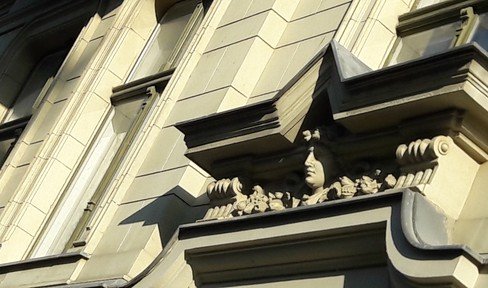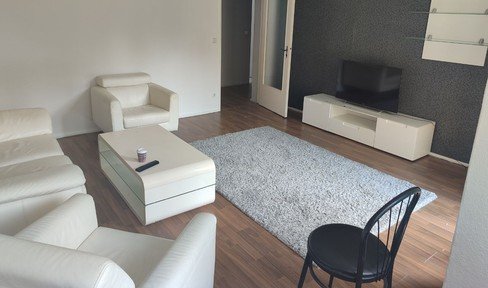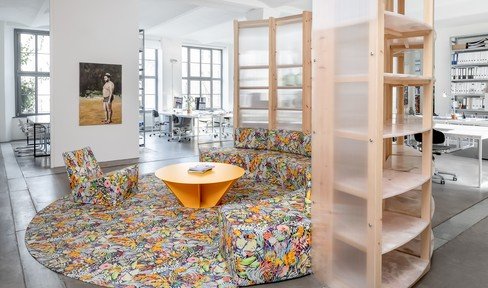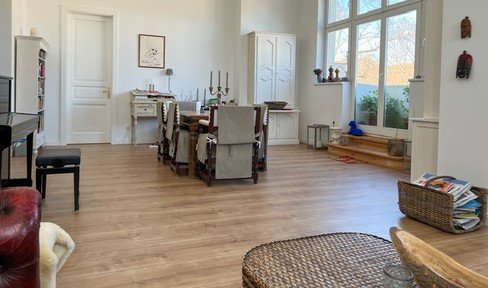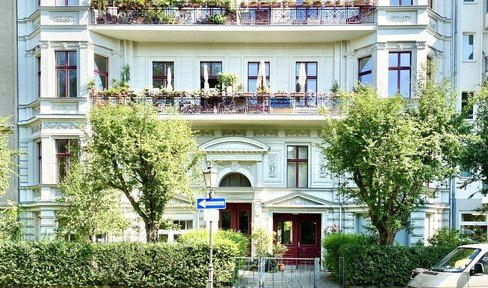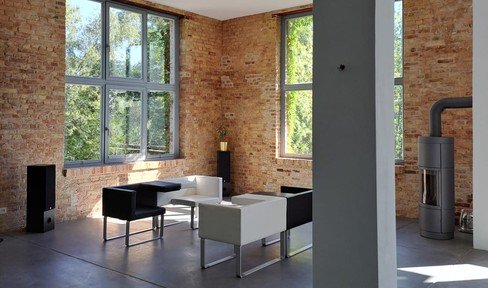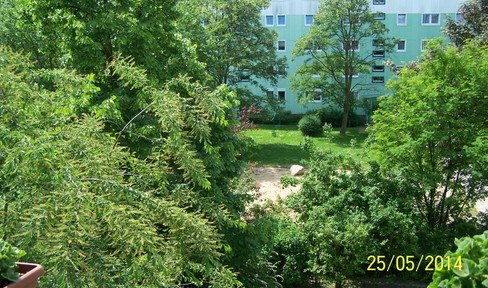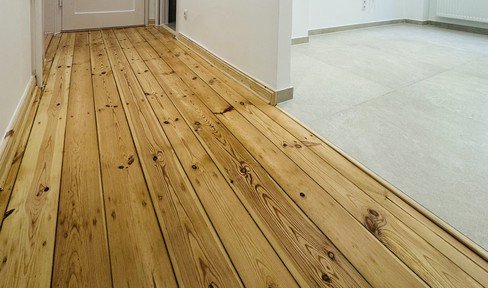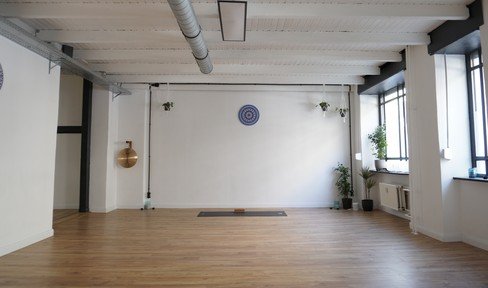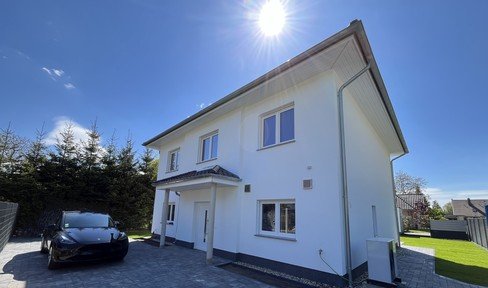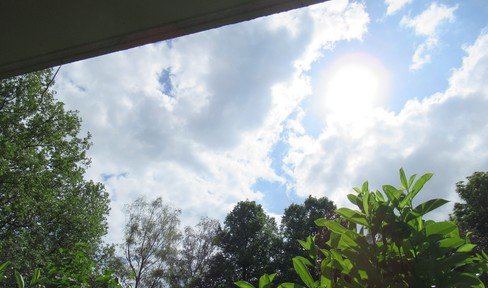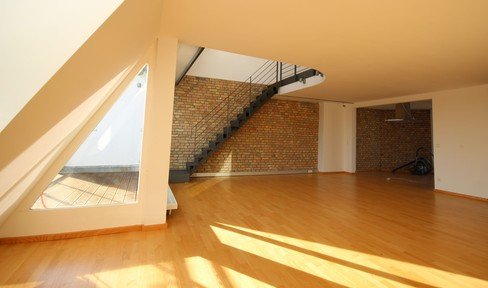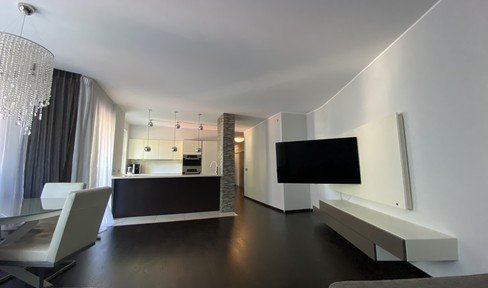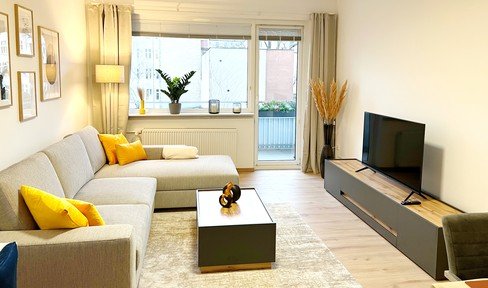- Properties
- Berlin
- Berlin

This page was printed from:
https://www.ohne-makler.net/en/properties/berlin/berlin/
Buy/rent a house or apartment: commission-free private real estate in Berlin
Here you can find from 454 offers your commission-free property in Berlin and surroundings
Real estate in Berlin - expensive and scarce
With around 3.75 million inhabitants, Berlin is not only the largest city in Germany, but also one of the most important European metropolitan areas. In addition to political institutions ranging from the Bundestag to embassies, Berlin is an important location for science and business. All of this creates a noticeable pull that attracts more people to the city. According to the 2011 census alone, the population will have increased by around 430,000 by 2022. That's 70,000 more people than live in the whole of Bochum, Germany's 16th largest city.
This population growth has a significant effect on property prices for apartments and houses as well as on rents in the city. The shortage of living space is leading to considerable excess demand and thus to high prices.
In particular, commission-free private properties are comparatively rare. However, the situation is not the same in all locations. While prices are high in the center and outlying areas, there are affordable apartments and houses in the central south and north as well as in the east of the city. Prospective buyers should therefore always look in other parts of the city to find an affordable apartment or house.
The location: Are the high prices for apartments and houses justified?
Berlin is the most populous city in the EU. Despite different ways of counting, more people live here than in Paris, London, Rome or Madrid.
On the one hand, this is due to the city's particular appeal to young people. The cultural and nightlife here is possibly even greater than in other cities. At the same time, Berlin is a center of science and offers very good links to institutions and the economy.
On the other hand, Berlin is an area of influx for the underdeveloped surrounding area in Brandenburg. Many people seek happiness in the city. Last but not least, the capital also had to take in many refugees from the crises in the Middle East and Ukraine. As a result of the large influx, apartments and houses at reasonable prices are hard to find.
Service sector in competition with the housing market
Berlin is also a strong business location at the heart of Europe and a bridge to the East. In 2022, the state of Berlin generated a gross domestic product of almost 180 billion euros. This makes Berlin one of the most attractive metropolitan areas in Europe. In addition to culture and tourism, the most important economic sectors are biotechnology, medical technology, the pharmaceutical industry, media and communication technology, construction and retail.
However, 80 percent of businesses belong to the service sector with an increased demand for offices and commercial space. This has influenced the construction industry, with the result that there are many office complexes where residential space might otherwise have been created.
Buying a house or apartment in Berlin: real estate prices in the city districts
The districts are affected differently by the strong influx and the impact of the economy. A few years ago, Berlin redrew the districts as part of a desired increase in administrative efficiency. Since then, the following districts have been subdivided:
- Mitte,
- Friedrichshain-Kreuzberg,
- Pankow,
- Charlottenburg-Wilmersdorf,
- Spandau,
- Steglitz-Zehlendorf,
- Tempelhof-Schöneberg,
- Neukölln,
- Treptow-Köpenick,
- Marzahn-Hellersdorf,
- Lichtenberg,
- Reinickendorf
As a rule of thumb for rents and purchase prices of condominiums or houses, the closer or further away from the center, the more expensive the living space. The areas between the outskirts and the center, on the other hand, are usually somewhat cheaper.
Private, commission-free apartments and houses are available everywhere, but not always to the same extent. This is because the situation in Berlin also means that both municipal apartments or cooperatives and real estate companies such as Vonovia, BUWOG or Berlinovo have a relevant share of apartments and houses in their hands. This includes many large buildings such as prefabricated apartment blocks. As a result, there are many properties that are not rented or sold privately. Anyone looking to buy a house or apartment therefore faces a manageable market and estate agents with relatively high commission demands.
Property prices in Berlin - attractiveness of the districts
According to data from ohne-makler.net, prices as of May 2024 are slightly below those of the previous year. Prospective buyers can expect to pay an average price of €6,052/m² for apartments offered by private agents without commission. Houses sold privately and commission-free average 5,275 euros/m².
But where are properties such as an apartment building, a bungalow in the countryside or a nice 2-room condominium particularly expensive for buyers and where are they cheap? Where is it worth buying a house?
There are noticeable differences between districts and neighborhoods. Depending on the data source, detailed evaluations differ slightly. In general, city center locations are expensive. But prices also stand out on the outskirts of the city, especially in locations on the Spree or on one of Berlin's lakes such as Wannsee.
Waterfront properties are in demand
Condominiums are particularly expensive on Wannsee and Schlachtensee, for example. Condominiums there, from apartments to multi-room apartments, cost around 6,500 euros/m² on average. Houses cost even more here, at just under 8,000 euros/m². The same applies to the entire district of Zehlendorf, although there are some exceptions with prices of around 4,500 euros/m². Houses vary greatly here, ranging from 6,500 to 8,000 euros/m².
Apartments in Konradshöhe an der Havel are somewhat more expensive. Up to 7,500/m² euros are common there. Houses, on the other hand, are slightly cheaper at around 6,500 euros/m², but are still very expensive in comparison. The Grundwald and Dahlem villa districts are even more popular. Here, houses tend to be sold at around 13,000 euros/m². The few apartments are priced at around 8,000 euros/m².
Berlin-Mitte is particularly expensive
Top prices are being asked for condominiums in Berlin-Mitte. Prices above 10,000 euros/m² are the order of the day. The high prices extend to the neighboring districts of Kreuzberg and Prenzlauer Berg as well as Moabit and around Tiergarten at a level of around 7,500 euros/m². Surprisingly, the houses are considerably cheaper. In some cases, prices fall by up to 2,500 euros/m². The explanation: many of the properties are large apartment buildings and old buildings are also difficult to sell at a profit as they are in poor condition. The owners therefore divide the properties into condominiums. As there is great interest in living space, prices for individual apartments are rising.
Affordable real estate locations in Berlin
But there are also cheaper options. Berlin is diverse in all respects, including housing. Small detached and semi-detached houses in leafy streets, apartment buildings in quiet side streets and the typical prefabricated building - that is also Berlin.
Neighborhoods and districts such as the "African", "Belgian" and "English" districts, the Anton, Brussels and Leopold districts and the Sparrplatz quarter also offer students affordable, albeit usually rather sparsely furnished apartments.
In the two districts of Haselhorst and Siemensstadt in the Spandau district, prospective tenants can also still find reasonably priced apartments, primarily in older buildings. The situation is similar in Lankwitz, Mariendorf and Marienfelde (all in Tempelhof-Schöneberg).
Prices for inexpensive condominiums range from 3,000 to 4,500 euros/m², while those for inexpensive houses are generally around 4,000 to 4,500 euros/m². These districts, for example, are all or partly affordable and below the metropolitan average:
- Buckow,
- Falkenhagener Feld,
- Friedrichsfelde,
- Giesendorf,
- Gropiusstadt,
- Hellersdorf,
- Johannisthal,
- Lichtenrade,
- Märkisches Viertel,
- Marienfelde,
- Marzahn,
- Niederschöneiche,
- Reinickendorf.
Surprisingly, even in expensive areas, there are always areas characterized by small properties that are comparatively affordable. Prospective buyers should therefore check the market carefully and keep an eye out for bargains. Particularly among privately sold and therefore commission-free properties, there are attractive houses or apartments for an attractive price from time to time.
Similar picture for rents
The distribution of rents (all as at spring 2024) is quite similar to that of property prices. The expensive locations for apartments and houses are also the expensive locations for tenants. In the affordable districts, especially in the prefabricated buildings in the east, rents below 9 euros/m² are possible, in some cases they are slightly higher at around 12 euros/m².
In Berlin-Mitte, on the other hand, prices per square meter of 20 to 25 euros are typical. They are thus similar to those in the city's villa districts. Surprisingly, prices per square meter in Prenzlauer Berg are also exceptionally high, exceeding 20 euros/m² in many places. The old trendy district of Kreuzberg, on the other hand, is comparatively cheap for tenants: "only" 16 - 18 euros/m² are called for. The districts of Charlottenburg, Französisch Buchholz, Wedding and Neukölln are similarly priced at 15 - 18 euros on average.
Even though many apartments in Berlin are rented out by cooperatives and real estate companies, it is worth taking a look at the apartments rented out privately without commission. According to data from ohne-makler.net, the average for these apartments and multi-room apartments is EUR 18.55 as of April 2024. For houses, prospective tenants have to calculate a little less, 18.08 euros/m².
Urban development and real estate investment in Berlin
Berlin has been in the headlines in recent years. As urban development and housing construction are barely keeping pace with demand, there has been talk of expropriations as well as a rent freeze. This has led to a certain amount of uncertainty, even if it only affects apartment buildings owned by large real estate companies. The situation has since calmed down somewhat.
Berlin is still trying to create new living space. This is an opportunity for anyone looking for a house or apartment to live in the German capital.
Over 20 neighborhood projects under construction
The Berlin government is striving to improve the scarce housing supply through numerous new buildings, new neighborhoods and renovations. The aim is to create 194,000 new apartments by 2030. A total of over 20 new construction projects are underway.
Neighborhoods planned include Blankenburger Süden (Pankow), Am Sandhaus, Buckower Felder (Neukölln) and the former Köpenick goods station. Other districts are being created at Tegel Airport with TXL North and the sustainable Schuhmacher Quarter as well as in Johannisthal/Adlershof, Elisabeth-Aue (Pankow), the new Gartenfeld (Siemensstadt) and Lichterfelde Süd. A special urban quarter is being created as the Berlin-Oberhavel water city along the Havel. There alone, 8,500 apartments are to be built. Most of the other districts are smaller and fill gaps in the current development plan.
These new-build districts are intended as a response to the large influx of people under the Berline strategy. They could have a noticeable effect on property prices and rents. Rents in particular should remain affordable thanks to the new living space. At the same time, more owner-occupied properties will create new opportunities for people who want to buy a commission-free house or condominium privately.
Overview: Situation on the Berlin real estate market
- Berlin is growing rapidly: between 2011 and 2022, there were around 430,000 new residents.
- Real estate is particularly expensive in the districts within the S-Bahn ring and on the waterfront.
- With the exception of some very good locations, prices are falling towards the city limits and in the central city radius.
- Housing is particularly cheap in prefabricated housing estates, but also in small estates with many detached and semi-detached houses.
- The supply of private and commission-free houses is comparatively low, as many apartments and apartment buildings are owned by real estate companies.
- Berlin has the highest estate agent fees in Germany.
- By 2030, around 194,000 apartments are to be built in over 20 city districts.
Price comparison for rents and real estate in Berlin
With our database, we provide an insight into the actual market development in Berlin as a real estate location. We have summarized the latest figures here:
Places in Berlin
Properties to Rent in Berlin
Properties for Sale in Berlin
Diese Seite wurde ausgedruckt von:
https://www.ohne-makler.net/en/properties/berlin/berlin/
